It’s official.
I’m now a wildlife geek.
Honestly, I’m already trying to figure out how and when I can get this rental lens sent back in a couple of weeks. In all my years of loon watching, I’ve never, ever caught them switching off nesting duties. I’d read about it. I’d seen documentaries.
But witnessing it first-hand . . .
Whoa.
Having this size lens enables me to respect their space (at least 200 yards), yet I have a front row seat. I’m not ashamed to say I got a little misty eyed as I watched.
First, I heard the nesting loon call out . . . the one that sounds like “where are you?”.
And then I saw the mate making its way over. He’d dive, then silently appear. All I would see was the top of his back, and his long neck stretched over of the surface of the water. After looking around the area, he’d dive once more. When he was withing a couple hundred yards, he called back to her.
The nesting loon then reared back to turn her eggs . . .
Can you see two of them? Olive colored.
Once she’d turned them, and he’d called to her once more, she slipped into the water.
It was hot on the lake today. Very, very hot! It was so scorching, the eagles had their tongues hanging out up on top their nest.
At least the loons were smart enough to put their nest in the shade. Still, once the nesting loon hit the water, she looked like a kid who’d jumped in a pool after a two hour time out.
She dove. She stretched her wings. She arched her back.
The only muscle I moved was my right hand, pointer finger as I snapped photo after photo, thanking God and anyone else I could think of for this glorious opportunity.
All the while, the other loon was quietly getting closer and closer to the nest. Mind you, neither one was more than 100 feet from it at any time.
As I watched, I remembered reading how careful they must be getting on and off it. A loon’s webbed feet are not made for land. They hit the water hours after being born, only coming back to land when incubating eggs. Their feet are set further back on their body to make them stronger divers, so you can imagine how awkward walking on land might be. If they have to get on or off the nest in a hurry, they might accidentally kick out an egg. Eagles lift up to leave their nest. Loons kind-of-sort-of fall off it. This is why it’s so important not to startle them.
This loon very carefully climbed back on . . .
Rearranged a stick or two. . .
Then settled in for his turn at baby sitting duty.
Again, I feel so lucky to have seen this today. I sure hope these two eggs hatch, and the babies survive all the dangers on the lake; among them are turtles from below and eagles from above. Boaters and kayakers too, are a challenge. These babies will be born when boating is at its peak. Unlike the eagles who sit on high to stare regally down on us with a “nah-nah-can’t-get-me-look”, the loons have nowhere to go. The babies can’t dive for weeks. They could end up separated from their parents. Please, if you see loons over the next couple of months, assume they have babies. Give them lots of space and the right of way at all times.
I’m off to post a similar camping blog post to my campers, and will have a few different photos there if you’re interested.
And if you’d like to know more about loons, here’s a link for the Maine Loon Project.
Stay tuned for loon updates!
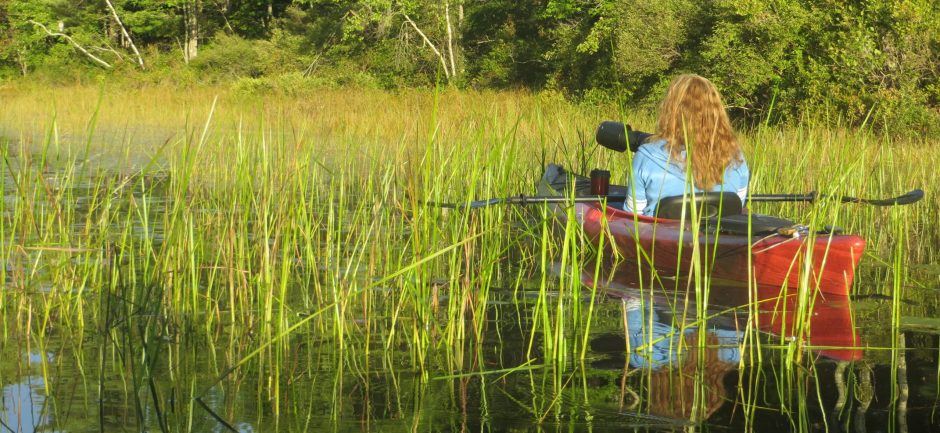
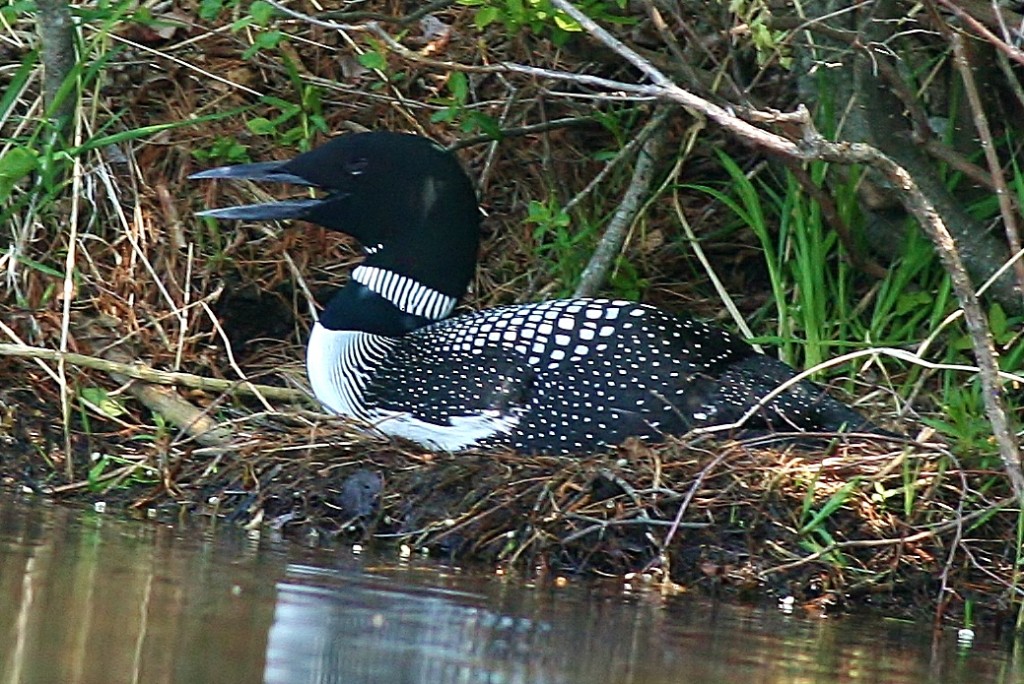
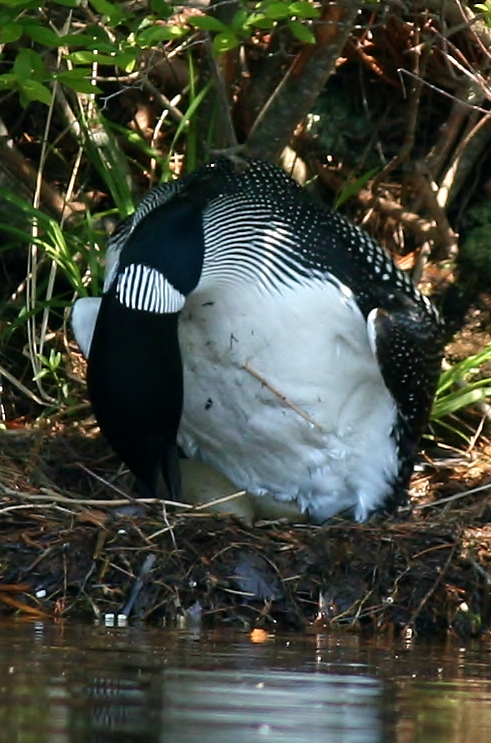
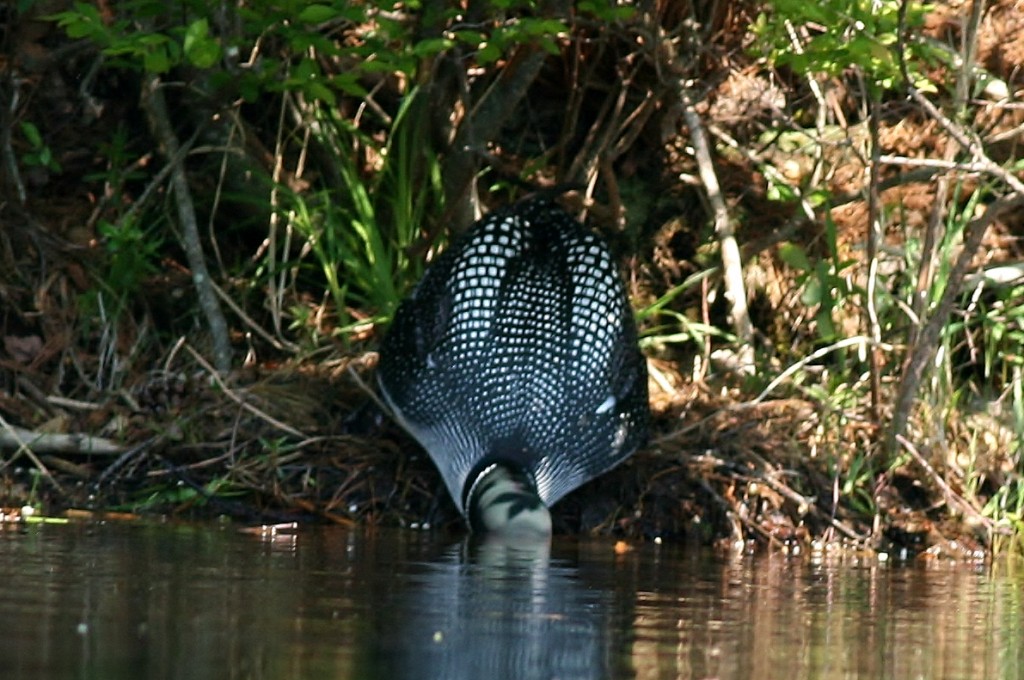
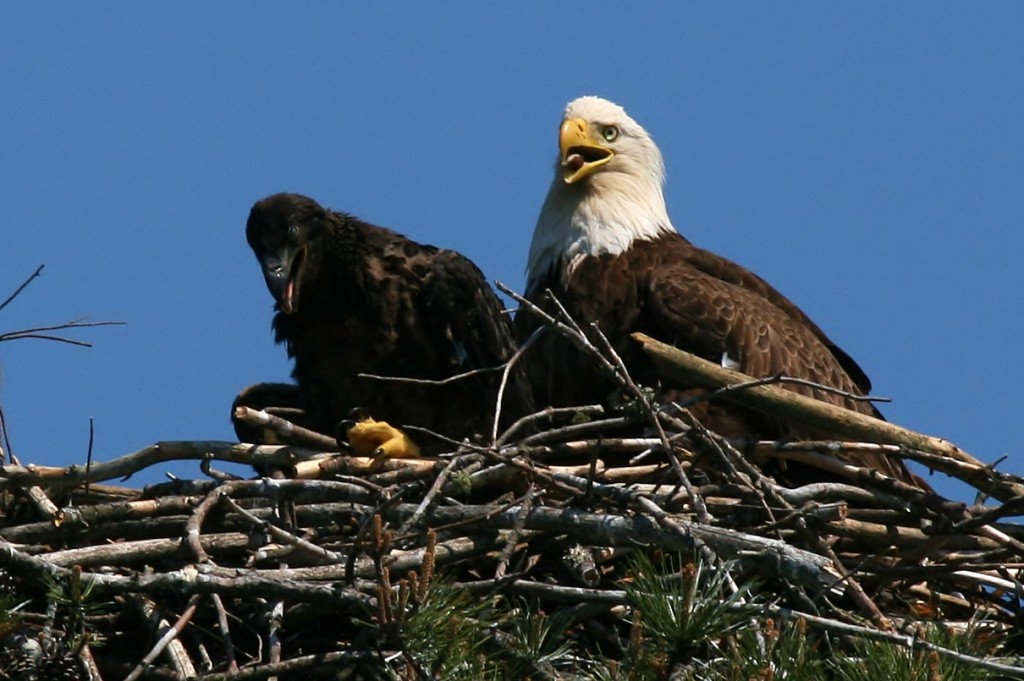
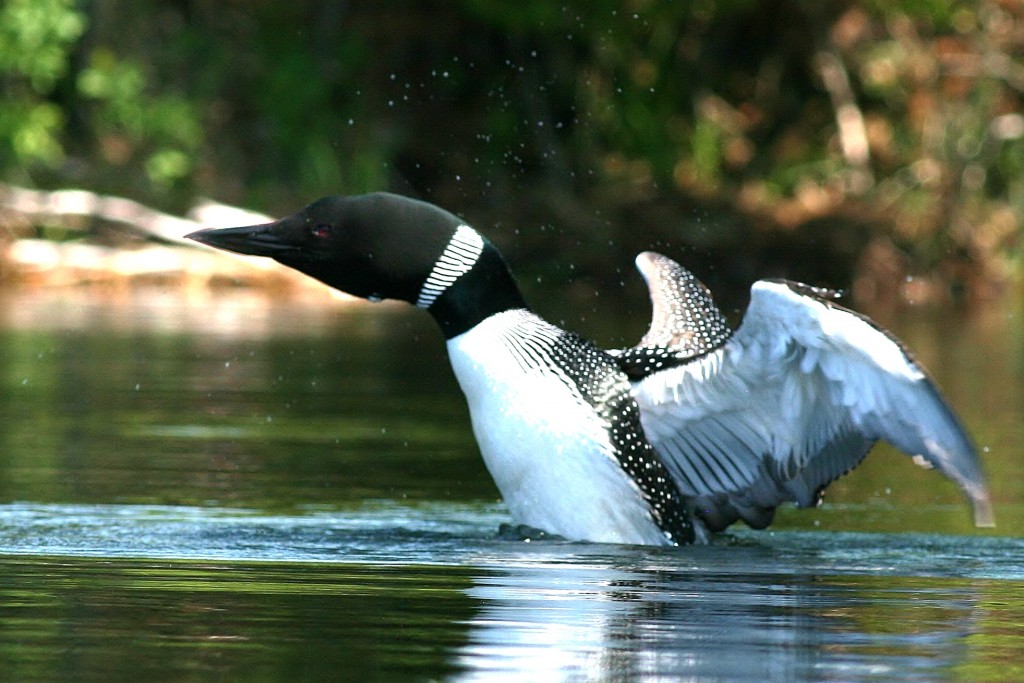
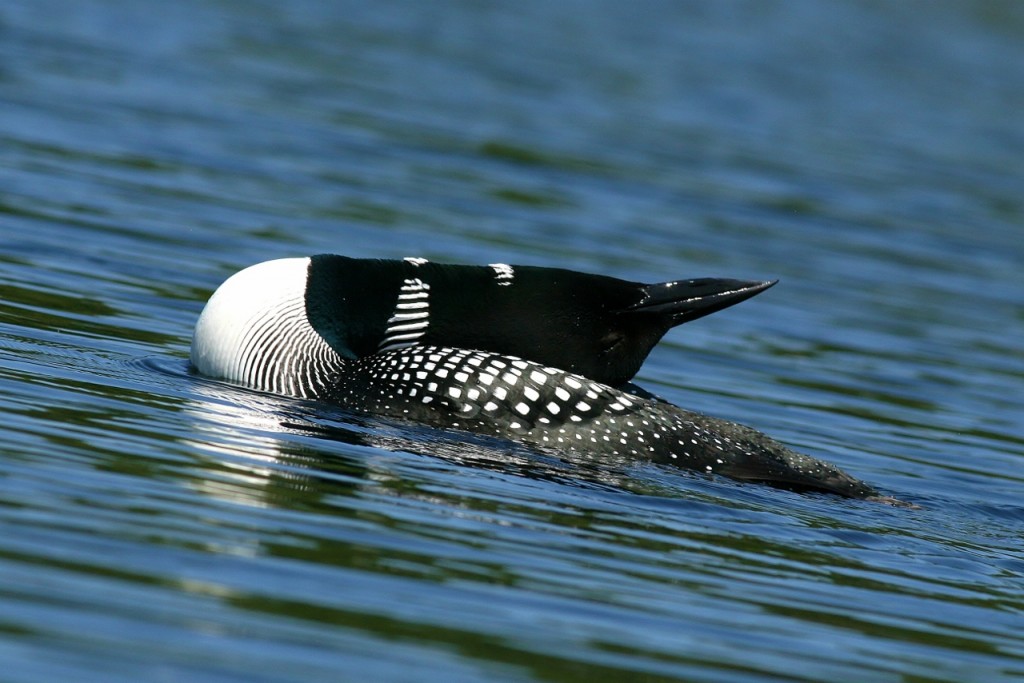
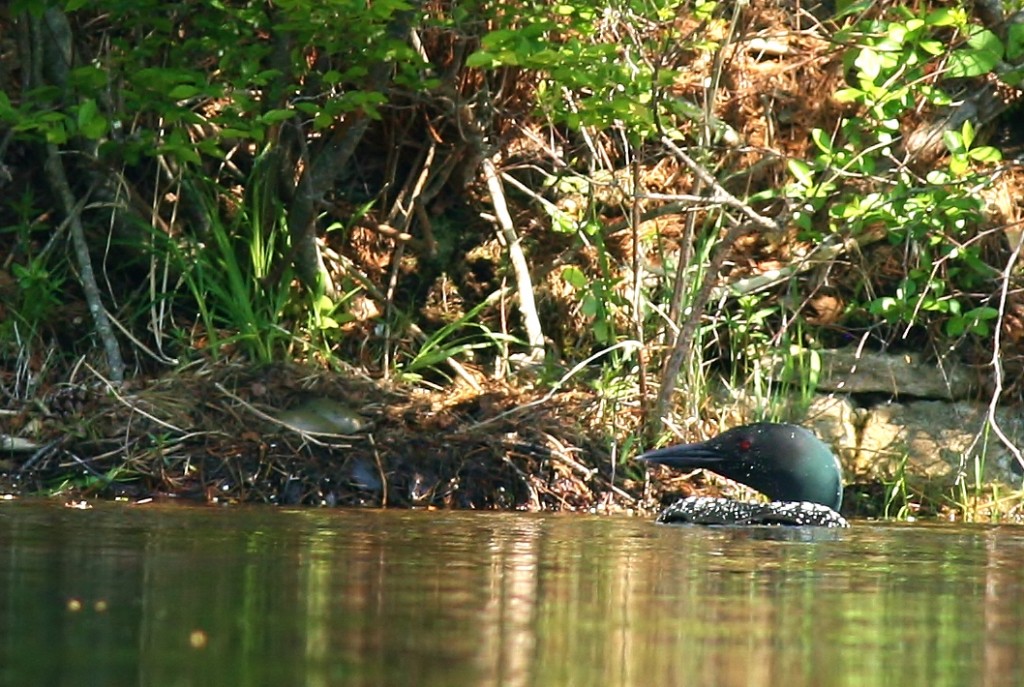

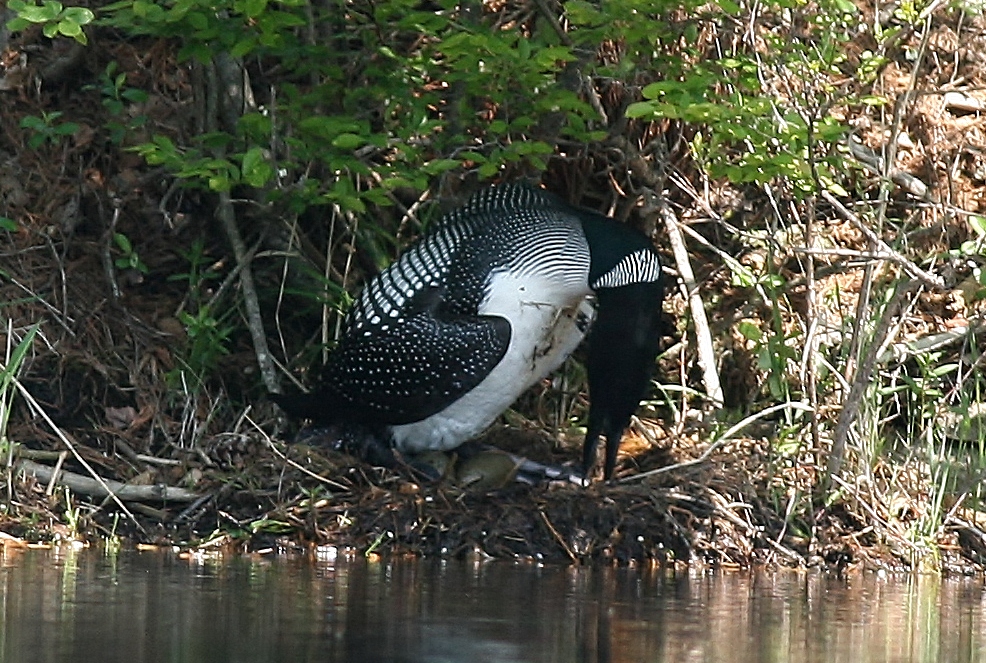
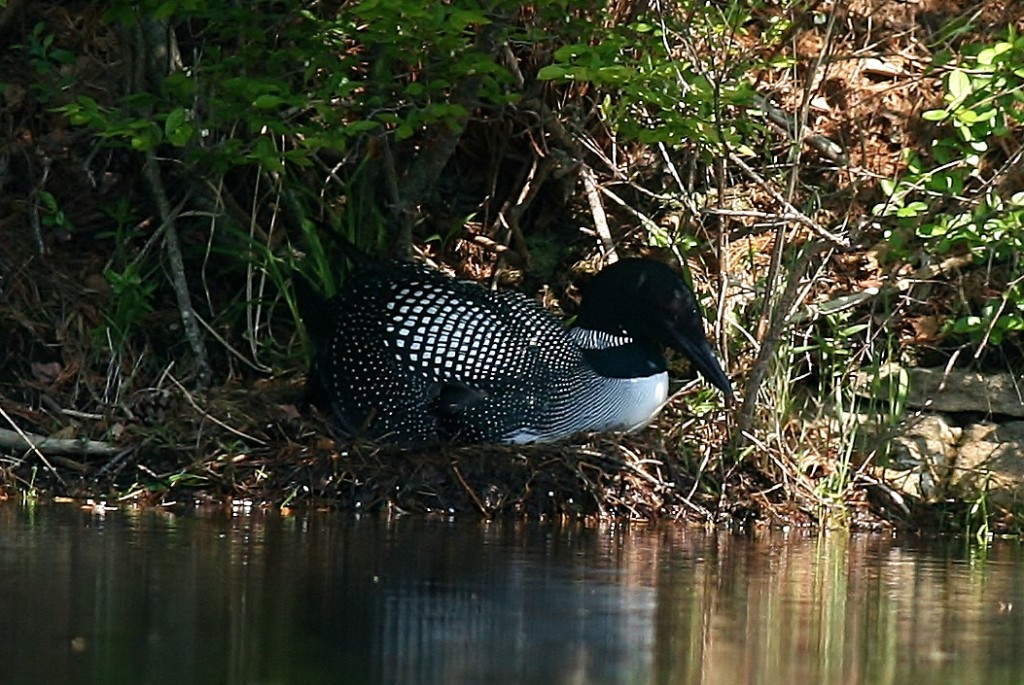
I am so appreciative of you sharing these magnificent photos! Living in the city doesn’t allow us to generally experience the close up life of eagles of loons, both of which I just love. You’ve done an incredible job with your big lens and it was definitely worth it!! THANK YOU!
Thank YOU for reading and commenting Lynn! I had so much fun with that lens. I hope to get it back in a couple weeks, after the loon chicks are born. Of course, they’ll be a lot harder to find then! And that’s as it should be . . .